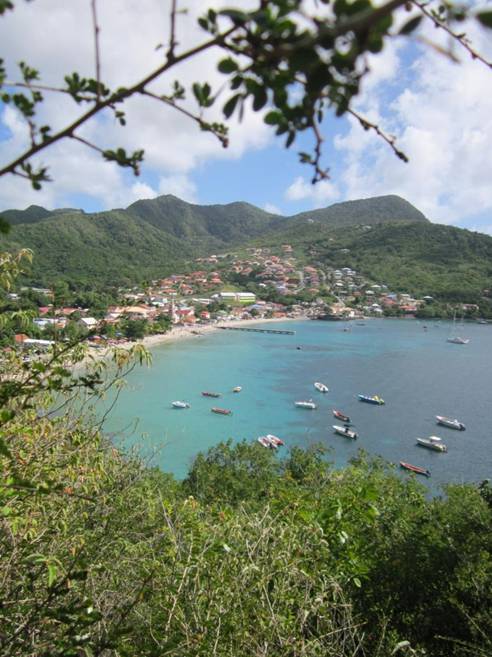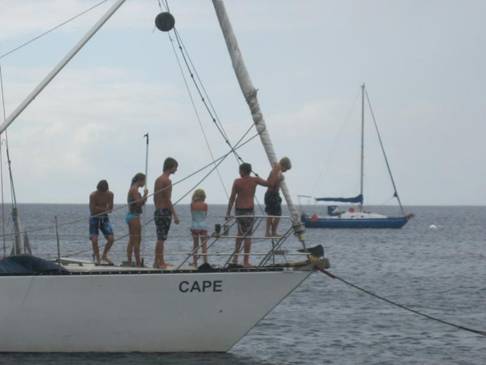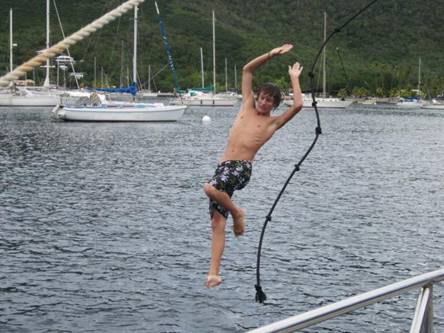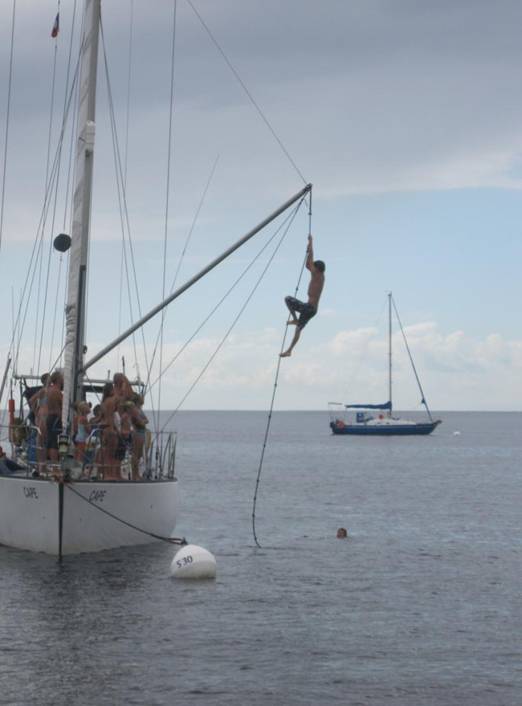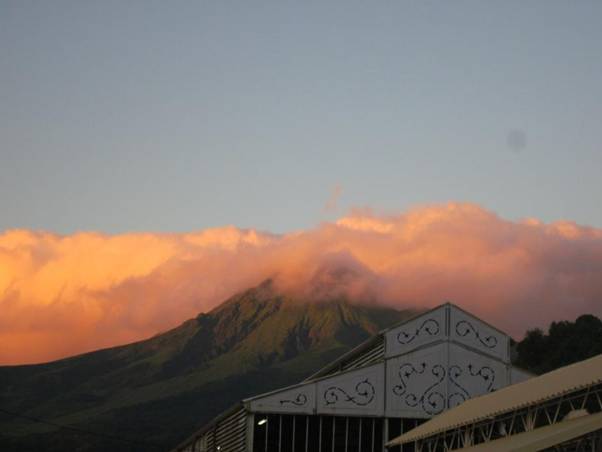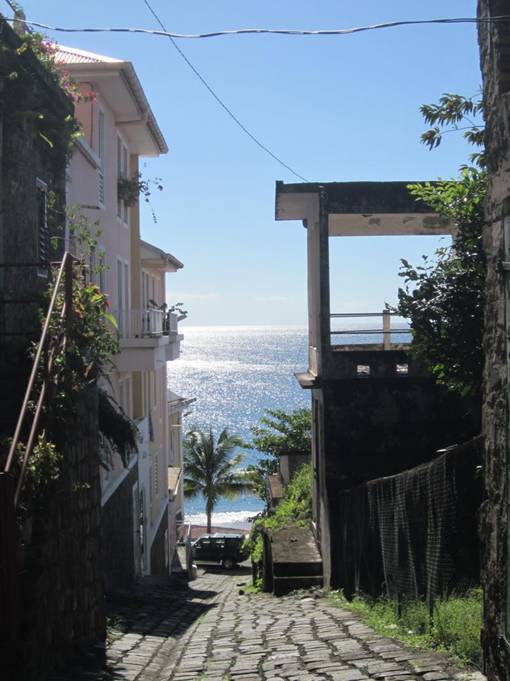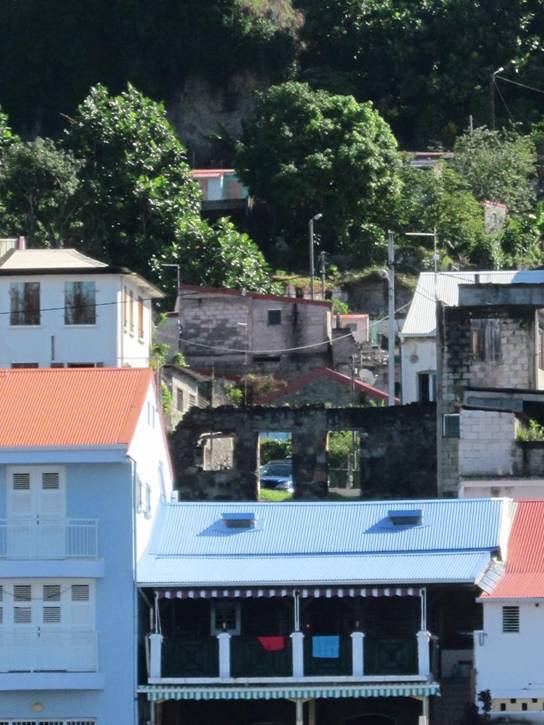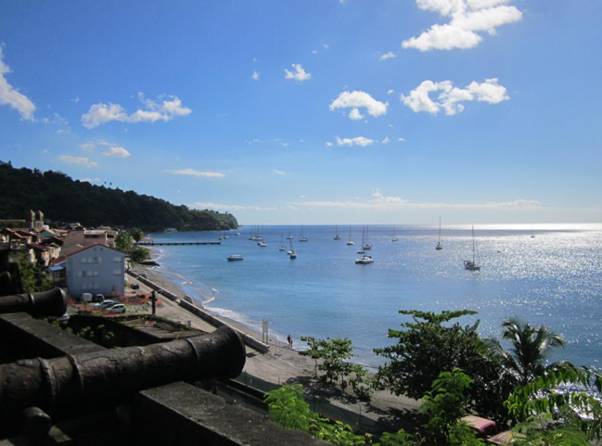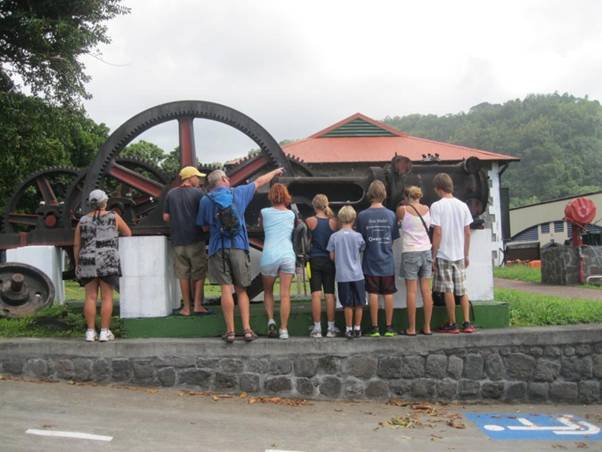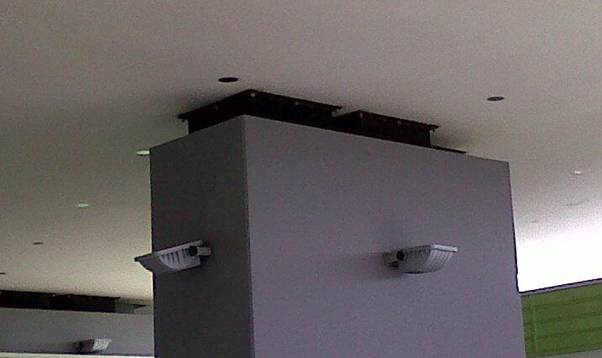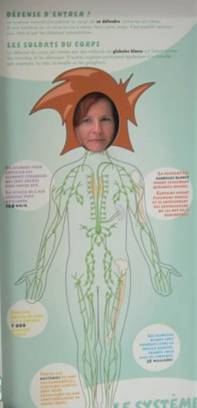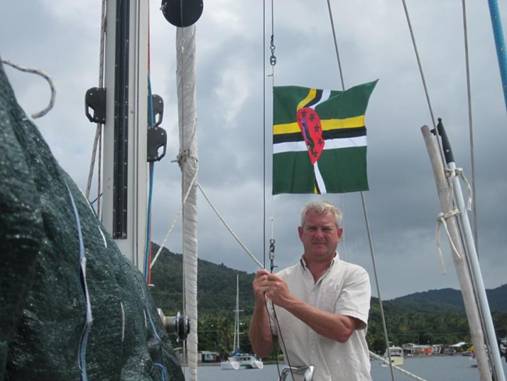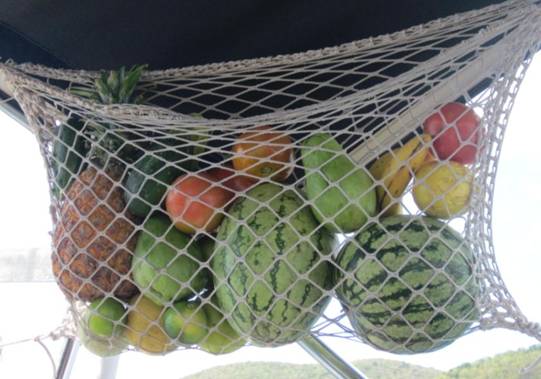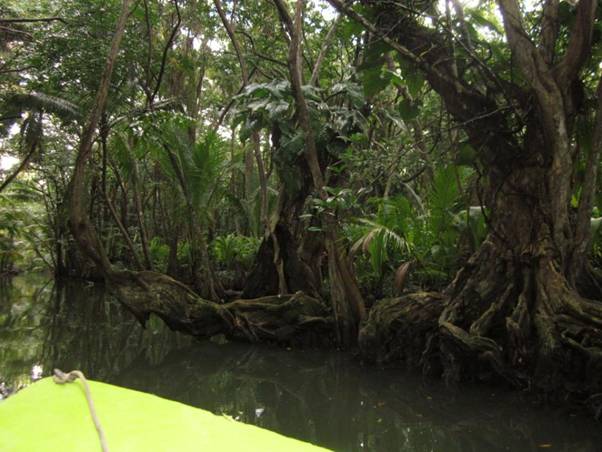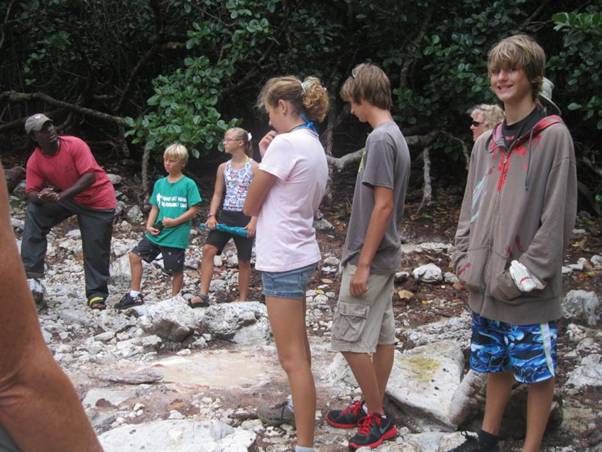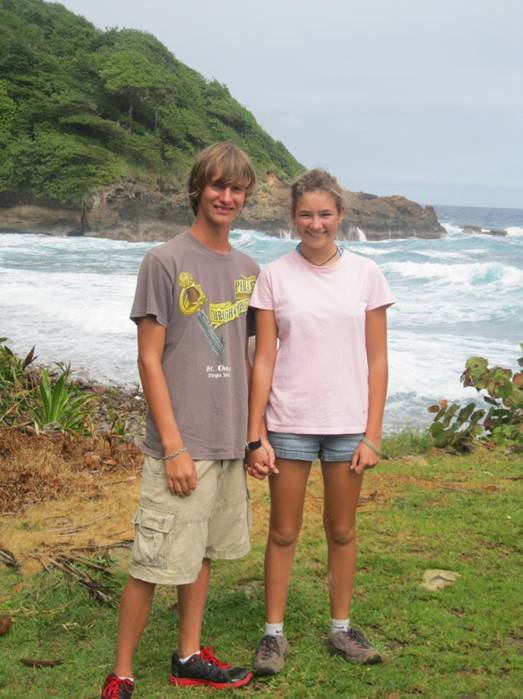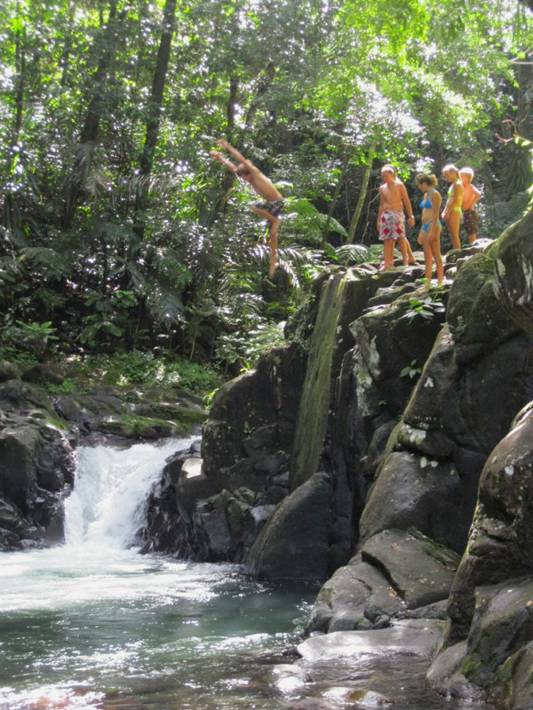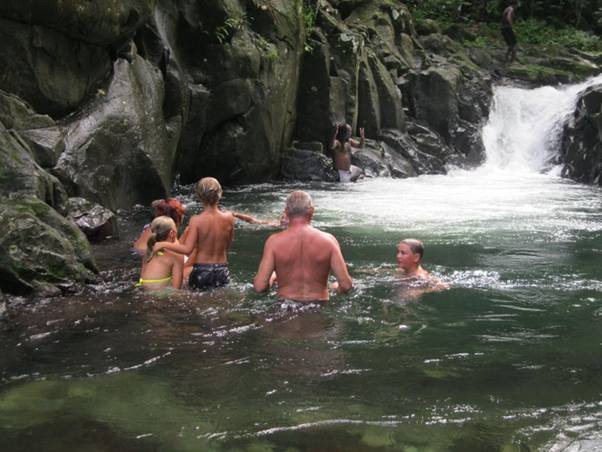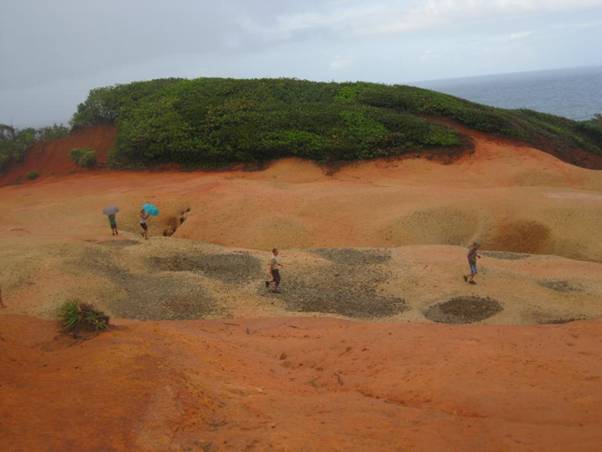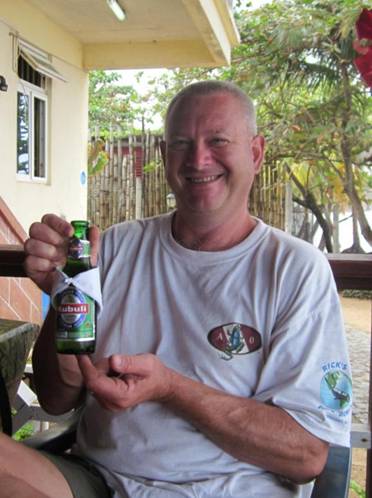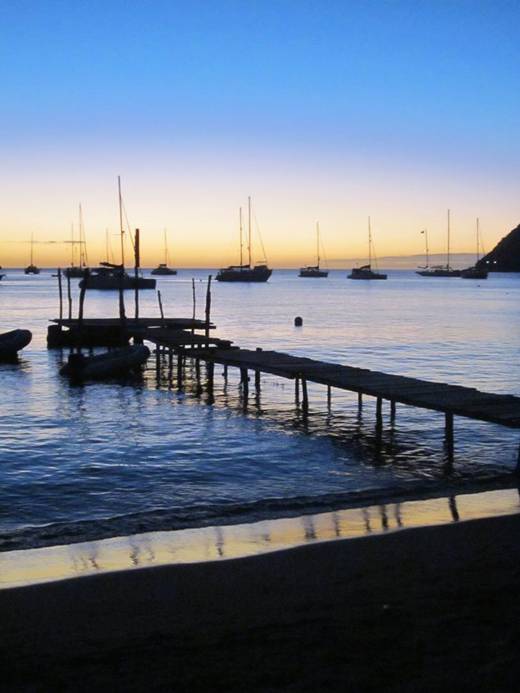Blog update: Caribbean Winter 2013 part 1

It’s been so long since I blogged properly that I’m putting in a link to the last real blog entry – how sad is that! http://blog.mailasail.com/cape/275 Anyway, I left you in Grande Anse d’Arlet in Martinique in January; this blog takes you uphill one island to Dominica. Martinique: Grande Anse d’Arlet We hung around Grande Anse d’Arlet for a bit longer to do a few walks and for the kids (from CAPE, ORION and MAKAI) to have their fill of the spinnaker pole swing.
Looking down on Anse d’Arlet after battling to the top of the hill through the undergrowth and never really finding the path.
The spinnaker pole swing: “OK, who’s going first?”
Jacob swinging off the rope.
The finals of the ‘how high can you climb’ competition. Martinique: St Pierre From Grande Anse d’Arlet we pushed on north to St Pierre. This former capital and cultural and economic centre of Martinique was described as the Paris of the Caribbean before it was destroyed (with the loss of more than 30,000 lives) by the eruption of Mount Pelée in 1902. Today St Pierre is a quiet holiday town with a tiny museum housing bits and pieces such as fused crockery and cutlery salvaged from the debris left by the pyroclastic flow.
Mount Pelée.
Modern St Pierre is a quiet holiday town with steep, paved roads.
The new town is slowly absorbing the ruins of the old town.
The anchorage is pretty but the bottom shelves steeply and swell works around the northern tip of the island to make it rolly – most yotties can stand about 2 nights before moving on. The DePaz Rhum Distillery = alcohol for school! We visited the DePaz Rhum distillery perched on the slopes of Mount Pelée, and learned how rhum agricole is produced in the French Caribbean islands. Unlike the typical dark Caribbean rum that is made from molasses, rhum agricole is pale with a distinctive (for ‘distinctive’ read ‘acquired’) taste and is made from sugar cane that has to be processed within 24 hours of being cut. After 48 hours of fermentation, the sugar cane juice contains about 5% alcohol, which is distilled to produce a clear rhum containing 70% alcohol. Aging is carried out for various time periods in stainless steel vats (to give white rhum), and oak barrels to give golden and aged rhum. The fraction that is lost during aging is called the “angels’ share”. The fraction drunk by Sarah, David, Nancy and Anita is called “rum punch”.
Boat bums doing rhum production for school. It was possible to buy rhum in 5 litre boxes in the gift shop (hic!). Earth & Sciences Discovery Centre The Earth & Sciences Discovery Centre (St Pierre) squats bravely on the slopes of the volcano that it monitors and incorporates a number of architectural features to help it withstand earthquakes.
The building sits on squishy rubber blocks on top of concrete pillars – to cushion the impact of an earthquake. A guided tour of the building would probably have been more interesting than the exhibitions, particularly as many are geared towards kids (and are only in French). You can imagine that this is where every schoolchild in Martinique goes for their annual school trip.
Big boat kids on a rhum-free school trip (no rhum for sale in this gift shop). Dominica From Martinique we had an uncomfortable, squally, overnight passage north to Dominica. Dominica turned out to one of our favourite islands so far; it is poor but unspoiled and the people are friendly and very proud of their island. The boat boys in Portsmouth have organized themselves into an association that provides services and security (the Portsmouth Association for Yacht Security, PAYS). Each yacht is allocated a boat boy as they come into the anchorage and that guy will sort out whatever you need during your stay. We really liked this arrangement that meant that we didn’t get hassled by lots of different boat boys while anchoring, or every time we appeared on deck, or every few hours if we didn’t (which is what happens in some islands). We went to a couple of the PAYS BBQs that are laid on for the yotties every Sunday – BBQ’d chicken or fish, sides and as much (lethal) rum punch as you can drink – which makes dancing on the sand dance floor particularly interesting... In addition to the boat boys, we loved the local produce market and street food, the walking and snorkelling, and the tours we took to see some of the sights.
Hoisting our Dominican courtesy flag (David you need a haircut).
We took the maxi taxi to the capital Roseau, where the architecture is rustic and the balconies are precarious.
Local fruit squash, including passion fruit and christophene in addition to the recognizable stuff. Indian River Tour The Indian River is named after the local Carib Indians but is now more famous as the place where the scenes for Calypso’s house were filmed in Pirates of the Caribbean: Dead Man’s Chest (you know, the ghostly scenes with spooky people standing waist-high in water with candles...). Well the spooky people weren’t there (OK I was a little disappointed at that), but the spooky trees were impressive. We took a short boat ride up the river then walked through the fields of a local farm (past land crabs and land crab ‘rabbit holes’, coconut palms, cocoa, banana and grapefruit trees, okra and pigeon pea bushes, and passion fruit vines) to the farmer’s rum shack (!) and sampled fresh passion fruit juice and home-made coconut rum.
Spooky trees. Northern Treasures The crews of CAPE, ORION and FAWKES packed into a minivan and set off to explore northern Dominica with boat boy ‘Cobra’.
Dominica’s steep mountain slopes are clothed in rainforest, swathes of coconut and banana, and terraces of crops – and mist and rain the day we went exploring.
Cobra filling us in on the unique habitats for animals and plants created by Dominica’s volcanic geology – in this case cold bubbling pools of sulphurous mud and water.
Beth and Jacob.
Jumping off the rocks into the waterfall plunge pool at Syndicate (or Milton) Falls.
The water was ice cold and crystal clear.
‘Mars’ was a surreal landscape of chalky red rock.
The coast was rugged and the sea was rough – we didn’t think much of the anchorage.
But the bar had potential.
This bottle of Kubuli (the local beer) was apparently up to scratch. Sunsets The sunsets in Dominica were stunning – luckily space is restricted so you only have to suffer one photo.
Sunset in Portsmouth, Dominica. Blog(s) for Saint Martin/Sint Maarten and back south to Trinidad to follow (someday, maybe...). You can get in touch with us via cape at mailasail dot com. © 2013. All materials (text and photographs) in this blog (unless stated otherwise) are the property of Sarah and David Smith. Copyright and other intellectual property laws protect these materials. Reproduction or retransmission of the materials, in whole or in part, in any manner, without the prior written consent of the copyright holder, is a violation of copyright law. |
